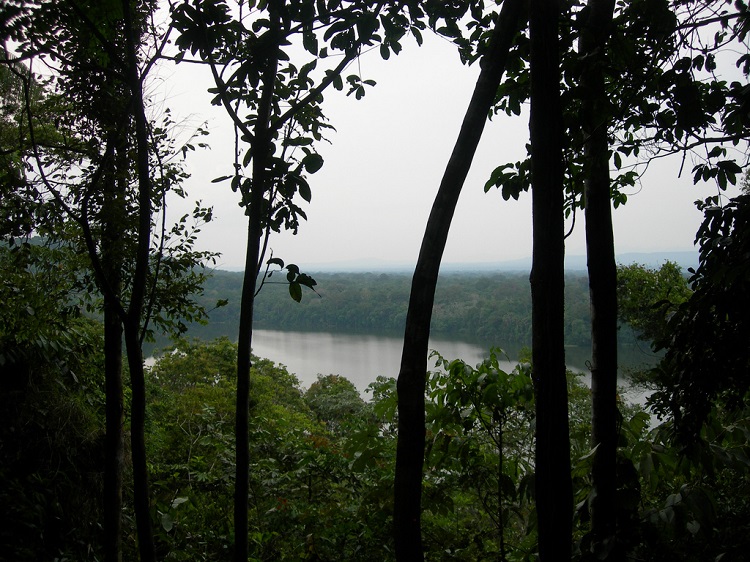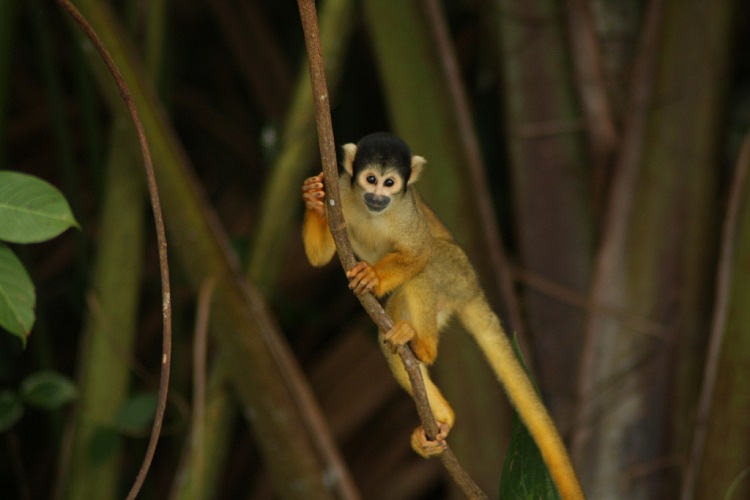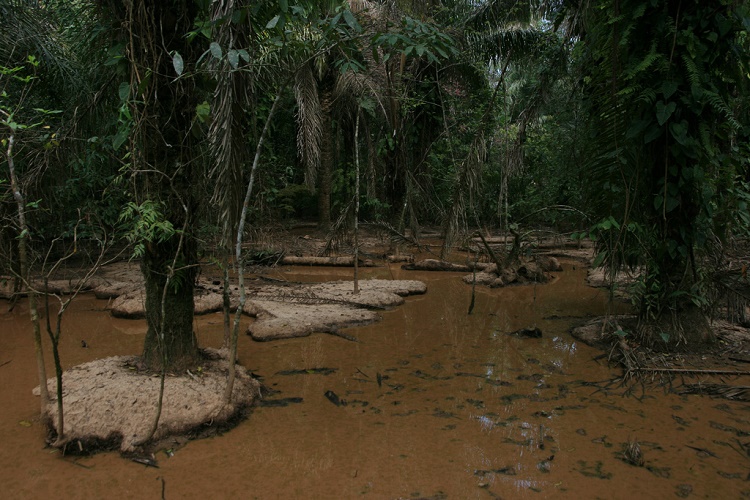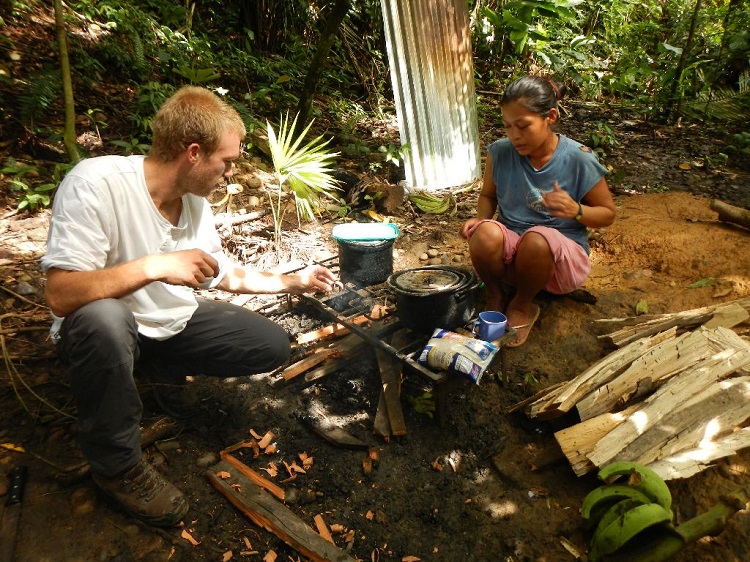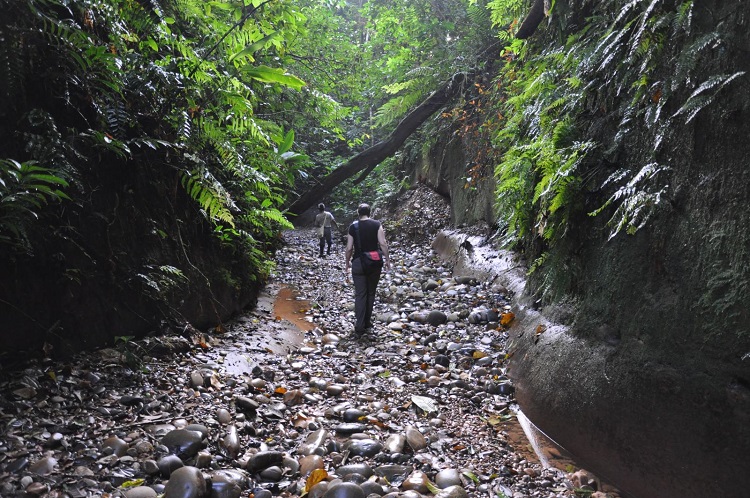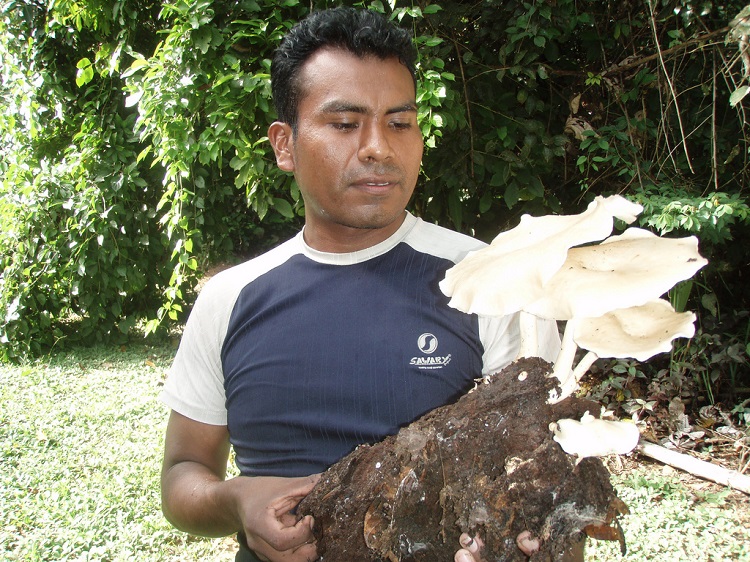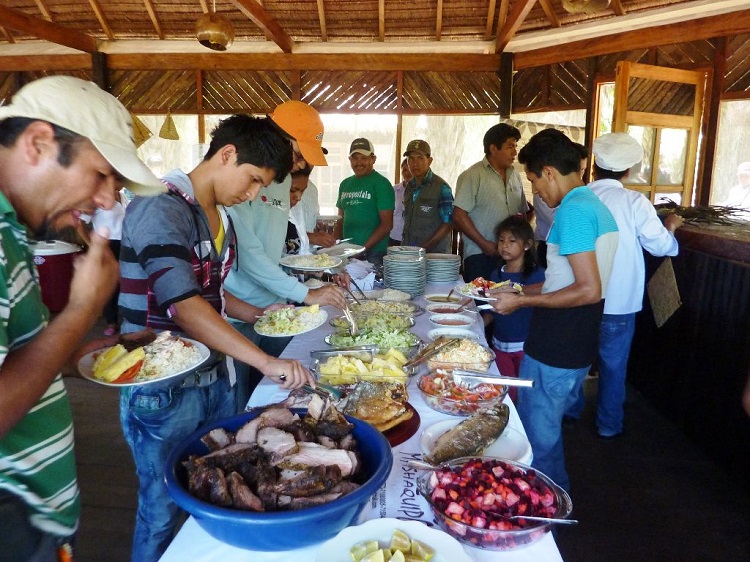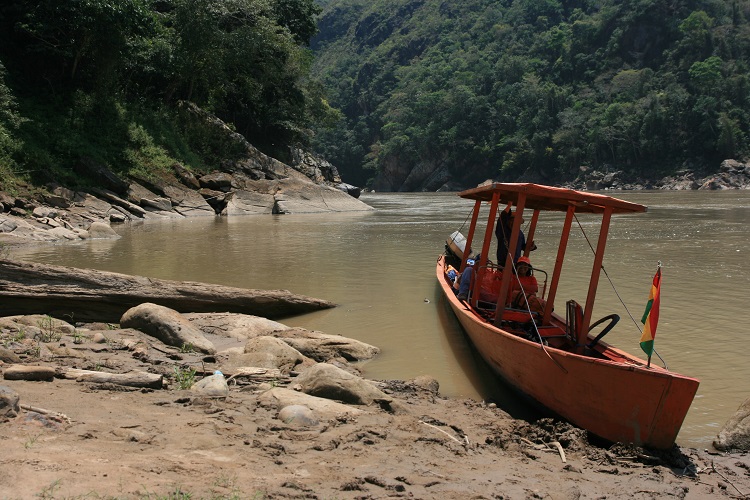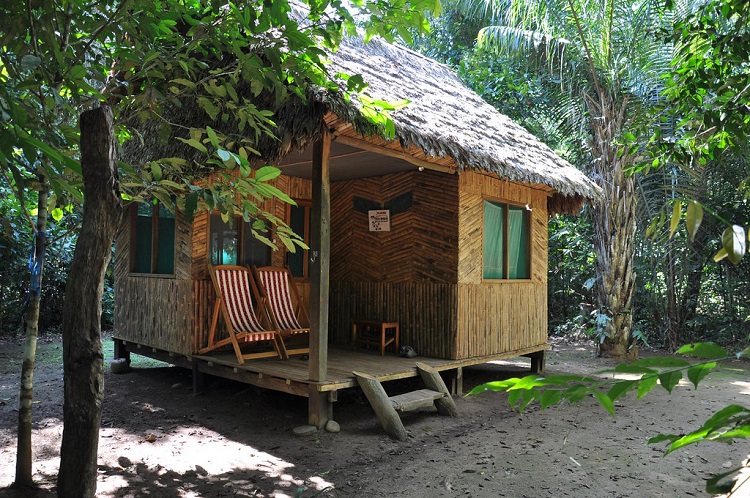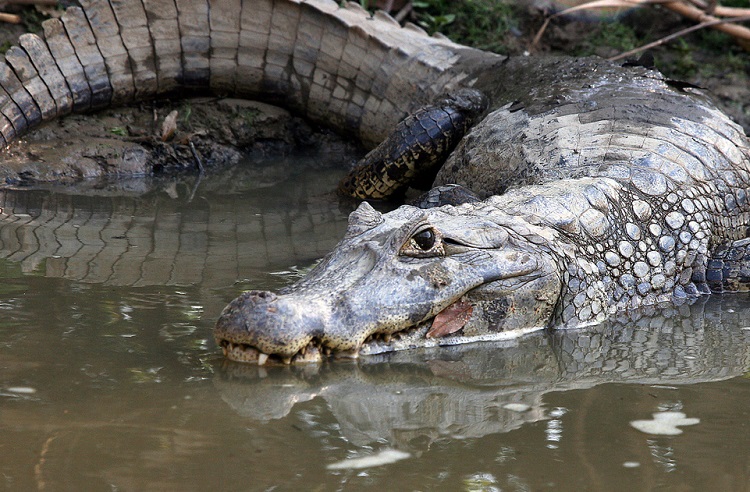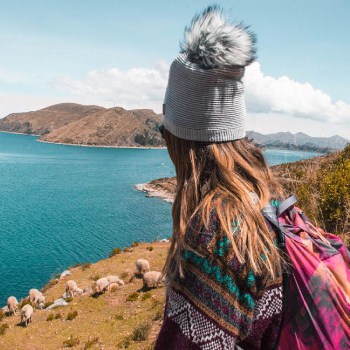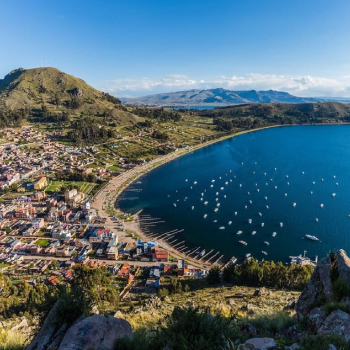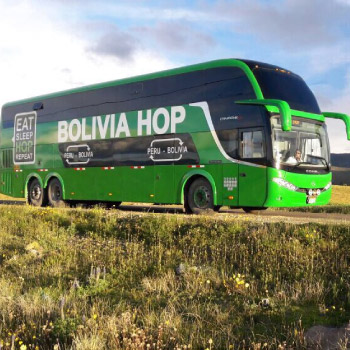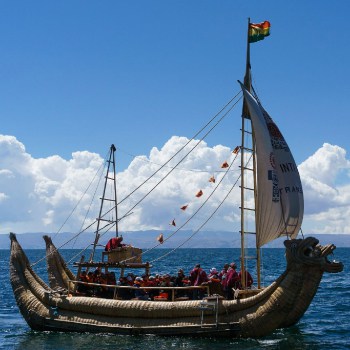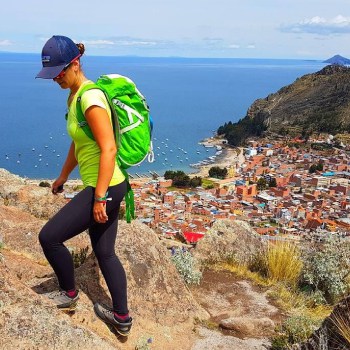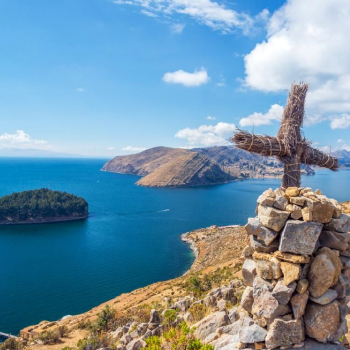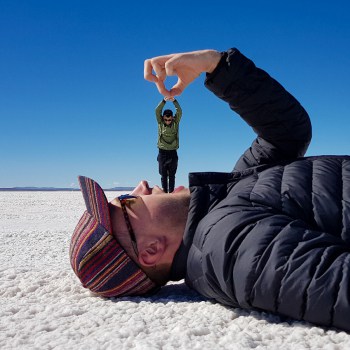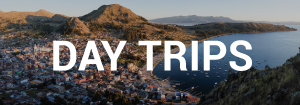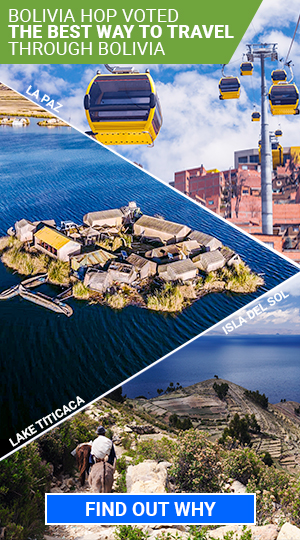Established in 1995, Madidi National Park is a jungle paradise situated in the in the upper Amazon river basin of Bolivia. Home to a record breaking number of species and plants, the park is not only one of the most diverse ecological hot spots on the planet but one of the largest protected areas in Bolivia.
Spanning 19,000 square kilometres from the Andes deep into the Amazon as well as ranging in altitude from 200 to 6000 meters above sea level, the park’s topography is vast and varied. From snow capped mountains to cloud forests and tropical jungles, Madidi offers up some of the most spectacular scenery in the country.
Travelling by boat from Rurrenbaque across the Beni river, tourists stepping foot onto the jungle’s muddy floors will delight in the multitude of flora and fauna on offer. Traversing the rugged terrain, you will come across winding rivers, rolling grasslands, mosquito laden lakes, steep slopes, Inca archaeological sights and possibly the seldom seen indigenous people of the tropical rain forest.
The best way to experience Madidi National Park is through one of the many ecological and cultural tours providing an authentic and safe jungle experience. Whether its spotting a jaguar, smelling the scent of a rare type of flower, learning about the different medicinal plants, or listening out for the chirps of more than 1000 species of bird, this national park has something to offer every nature lover.
Plants And Wildlife
Renowned for its vast array of flora and fauna, Madidi National Park is a dream destination for botanists and animal lovers alike. An ecological masterpiece, the park boasts thousands of species of birds, insects, mammals, fish, reptiles and amphibians as well as over 20,000 plant species.
Jaguars, sloths, vicuñas, pumas, spectacled bears, pink river dolphins, and the recently discovered titi monkey are just some of the animals you can expect to see inside the jungle’s green walls. The park is also home to a large portion of Bolivia’s avian population. It’s estimated 1100 species of bird exists in Madidi, amounting to 11% of all species worldwide.
One of the best ways to experience Madid’s wildlife is by cruising along the muddy riverbanks of Tuichi River. Many animals emerge from the dense forest to drink and feed along the shores of the lake, making it the perfect place to spot turtles, catfish, giant river otters, capybaras, macaws, and monkeys. Another great wildlife watching opportunity is a night walk through the jungle, where you can catch a glimpse of the park’s nocturnal creatures.
Madidi is also a wonderful place to learn about the Amazon’s vast array of medicinal plants as well as the traditional and sustainable uses of its natural resources.
With so many unique species being discovered year after year, it’s no surprise that Madidi National Park is a hotspot for the world’s leading biologists, entomologists and researchers.
Weather
Ranging from cold and blustery in the alpine regions to hot and humid in the northern lowlands, Madidi’s weather differs greatly due to the park’s complex topography.
Madidi features two seasons:
- Rainy season (summer) from November to March
- Dry season (winter) from April to October
Most travelers spend the majority of their time in the tropical lowlands where the climate is hot and humid year round. The temperature usually sits between 25ºC to 33ºC except during the months of June and July when the Arctic winds can cause temperatures to drop between 7 to 10°C. Being a rainforest the park receives heavy rainfall, averaging between 800mm to 4000mm of precipitation throughout the year.
The best time to visit Madidi national park is in the dry season. Despite the cooler weather, this is the time when most of the park’s wildlife is attracted to the river, trails are less muddy and there are fewer mosquitoes hovering about. For those travelling between December and March be aware that activities and flights are more likely to be cancelled due to heavy rainfall.
Local People
Madid National park is home to 46 indigenous communities from six different tribes. Over the last 50 years the Quechua and Aymara groups of Bolivia’s Andean highlands have been migrating to the Madidi region, competing with native lowland tribe such as the Chamas, Maropas, Chimanes and Tacanas who have lived in the south and southeast regions of the park for the past three centuries.
Whilst the majority of Madid’s indigenous communities still practise ancient Amazonian traditions, it’s becoming more and more common for tribes to merge their traditional lifestyle with modern technologies. Today many of the local people make a living from Madidi’s growing eco-tourism as well as from small commercial ventures such as handicrafts, fishing, and agriculture.
Living in synch with the environment they so heavily depend on, indigenous communities use their income not only to better their living conditions, but to ensure a sustainable future, helping to protect the vulnerable nature of Bolivia’s Amazon.
Popular Things To Do
- Book a multi-day nature trek into the pristine Amazon rainforest, learning about different plants, trees, animals and bugs
- Take a sunset canoe ride along the shores of lake Chalalán looking out for monkeys, birds, capybaras and the elusive jaguar
- Go birdwatching, looking out for brightly coloured macaws, orinoco geese, pied lapwings and black skimmers
- Spend time with a local community to learn how they gather plants for medicine, diet and rituals
- Explore the park at night to appreciate the sounds of the jungle and observe nocturnal animals
- Visit Macaw Clay Lick where you can witness huge troops of white lipped peccaries
- Swim with pink river dolphins
- Raft grade 1 to 3 rapids along the Tuichi River
- Use local fishing techniques to catch and release golden dorados, giant pacus, piranhas and catfish
- Enjoy a traditional “dunucuabi” dinner of catfish wrapped in leaves or fish á la “tacuara” inside bamboo from the Bolivian Amazon
Bolivian Life Quick Tip:
As voted the best way to travel around Bolivia and Peru, we highly recommend choosing Bolivia Hop as your means of transport. Their safe, flexible and trustworthy service have proven to be the best way of getting the most out of your time in South America!
Tours
Whilst it’s possible to explore Madidi on your own, it’s highly recommended to book a tour in order to get the most our of your jungle experience. There are plenty of tour operators serving the national park offering different programmes for varying lengths of time.
The average cost for a good quality 3 day /2 night tour is around $250 US per person which typically includes the following:
- Accommodation in an eco-lodge
- Meals and drinks (water/juices)
- Guided tours and activities
- Transfer to and from Rurrenabaque Airport
- Transport by boat to and from Madidi National Park
Most tours are all-inclusive and can be paid for in advance by credit card. You can book in advance via email or on a walk-in basis directly in Rurrenabaque.
When booking a tour, it’s important to note that quality and standards do vary significantly according to price. Higher tour prices usually mean tour staff are paid well year round, guides are professional and knowledgeable, accommodation is comfortable, profits go back into conservation work, and companies are environmentally concious.
Tour Companies
The following are reputable companies offering daily and multi-day tours of Madidi National Park:
Park Fees
The entrance fee to Madidi National Park is 125 bs ($18 US). Be aware that most tour operators do not include this entrance fee in their price.
Getting There
The main entry point to Madid National Park is via the small town of Rurrenabaque, a popular jumping off point for many of the jungle tours and treks. The Amazonian border city can can be accessed by land or air:
Note: Most tour companies can help you organise/book transport in and out of Rurrenabaque, however the cost of plane/bus tickets are generally not included in the tour price.
By Plane
From La Paz: a scenic 40 minute flight across snow capped mountains into the lush Amazonian jungle. A return flight with
Amaszonas is $192 with flights departing six times daily. TAM, a branch of the military airline, also has flights to Rurrenabaque charging $140 for a return flight and departing once a day. There is a terminal fee of $2 US.
From Santa Cruz: a 1 hour flight leaving 4 times daily. A one way flight to Rurrenabaque with
Amaszonas is around $165 US with a short stopover in La Paz.
Upon arriving in Rurrenabaque a scheduled minibus will take you between the airport and the town centre for $1 US. You will be told what time the airport shuttle leaves when you confirm your flight.
Because flights are frequently cancelled due to bad weather, protests and fuel shortages, it’s important to reconfirm your ticket the day before departure. If a flight cancellation does occur and you are unable to wait for another one, you will be refunded only 70% of the ticket value.
By Bus
From La Paz: A cheaper option than flying, the gruelling bus ride between La Paz and Rurrenabaque is long, arduous, and bumpy. Descending around 3500 meters along unpaved windy roads, the public bus takes around 20 hours, even longer in bad weather. Those wishing to break up the trip can spend the night in the picturesque town of Coroico, which is only 3 hours from La Paz. Despite being a great budget option at only $10 one way, this bus journey is definitely not for the fainthearted.
The only tour bus servicing the La Paz – Rurrenabaque route is Turbus Total. Their office is located on the street corner of Villa Fatima bus terminal (corner of calle Yanacachi and Ocobaya) which you can reach via a 30 minute minibus ride from the center of La Paz. For those wishing to stop in Coroico, there are many buses leaving daily from the Villa Fatima bus terminal.
From Santa Cruz: In order to reach Rurrenabauqe you will first need to travel to Trinidad. Buses run from Santa Cruz’s Terminal Bimodal, leaving every morning between 10am and 12pm and every evening between 5pm and 8pm. The journey takes around 9 hours.
From Trinidad it’s an 18 hour bus ride that goes through San Ignacio de Moxos and other small towns. A one way trip is $15-20 US.
The above route is typically serviced by large buses equipped with reclining seats allowing comfortable travel during long-distance and overnight journeys. For a little extra money travellers can opt for a “cama seat” offering 160-degree reclining seats with decent leg room.
By Boat
From Rurrenabaque: Madid National Park is accessed by motorboat up the rivers Beni and Tuíchi which takes roughly 3-5 hours depending on the weather. Most tour companies will meet you in Rurrenabaque and take you into the park.
Where To Stay
Most tourists visiting Madidi will spend a couple of nights at one of the park’s unique and isolated eco-lodges. Accessible only by boat, the lodges are located deep within the jungle making the perfect base to explore the park’s natural wonders.
As well as providing comfortable and environmentally friendly accommodations, the eco-lodges also help to improve the lives of the park’s local people. The majority of lodges are run by Mdidi’s indigenous communities who not only benefit from a sustainable income, but have a large say in how the park’s tourism impacts their pristine environment.
It is important to remember that the lodges, whilst lovely, are very minimal in terms of amenities. Electricity (if any) is only available at certain times of the day and running water is limited so don’t expect steamy hot showers.
Ranging from basic to the more luxurious, the following eco-lodges are well worth a stay when visiting Madidi National Park:
- Serere Eco Reserve
- Berraco del Madidi Lodge
- Mashaquipe Ecolodge
- Madidi Jungle Eco Lodge
- Chalalan Eco lodge
- San Miguel del Bala Eco-lodge
- Sadiri Lodge
Travel Tips
- Make sure to bring plenty of cash. Whilst there is one ATM in Rurrenabaque, located just north of the main plaza at Banco Union, it frequently runs out of money and only allows you to withdraw $70 US at a time
- US dollars can be exchanged in town for Bolivianos at the Banco Union and Banco Fie, Moskkito’s Bar and Hotel Beni
- Tap water is not suitable for drinking. Make sure to check that fruit juices and ice are made using bottled, boiled, filtered or treated water
- There is no Internet connection in Madidi National Park. WiFi and computer access is available in nearby Rurrenabaque however is fairly slow and unreliable
- Like any tropical country, there is a risk of contracting malaria, yellow fever or dengue fever when in the jungle. To help prevent against insect bites it’s recommended to wear long sleeved shirts and trousers, sleep under a mosquito net and to use insect repellent containing DEET, especially at night (see our guide to protecting yourself against mosquitoes). We also recommend consulting a physician prior to visiting Madidi to get the most up to date advice on medications and vaccinations
- Do not feed or touch wildlife as it changes their natural behaviour and encourages interaction with humans
Have you visited the Amazon rainforest? Share your experience in the comments below: 